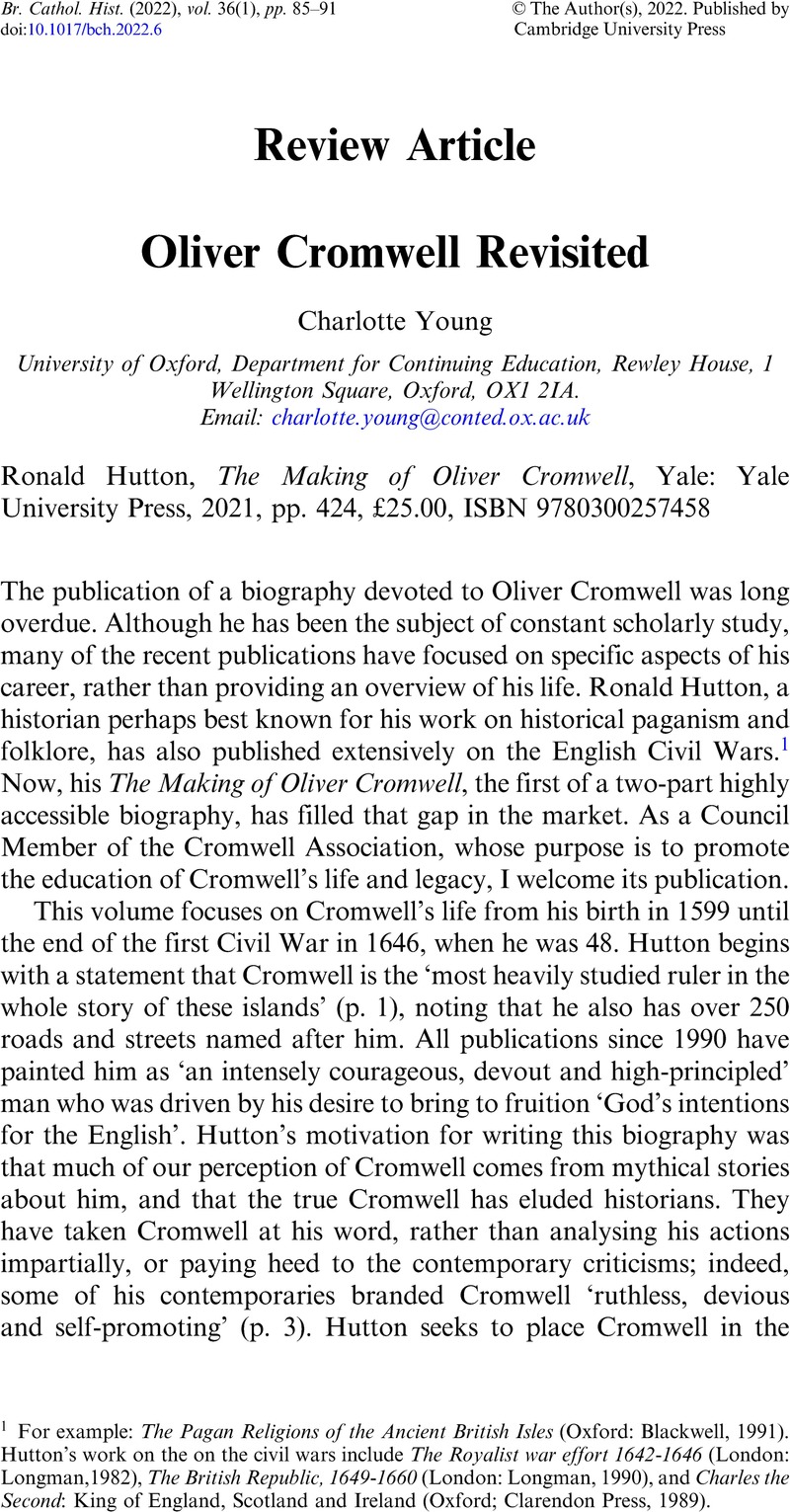No CrossRef data available.
Published online by Cambridge University Press: 08 June 2022

1 For example: The Pagan Religions of the Ancient British Isles (Oxford: Blackwell, 1991). Hutton’s work on the on the civil wars include The Royalist war effort 1642-1646 (London: Longman,1982), The British Republic, 1649-1660 (London: Longman, 1990), and Charles the Second: King of England, Scotland and Ireland (Oxford; Clarendon Press, 1989).
2 Professor John Morrill is a distinguished historian of the the English Civil War, whose publications include Revolt in the Provinces: The People of England and the tragedies of war 1634-1648 (London: Longman,1999) and Oliver Cromwell and the English revolution (London: Longman,1990). He is a Past President of the Cromwell Association, and has recently finished editing a new four-volume edition of Cromwell’s letters and speeches, due to be published in 2022.